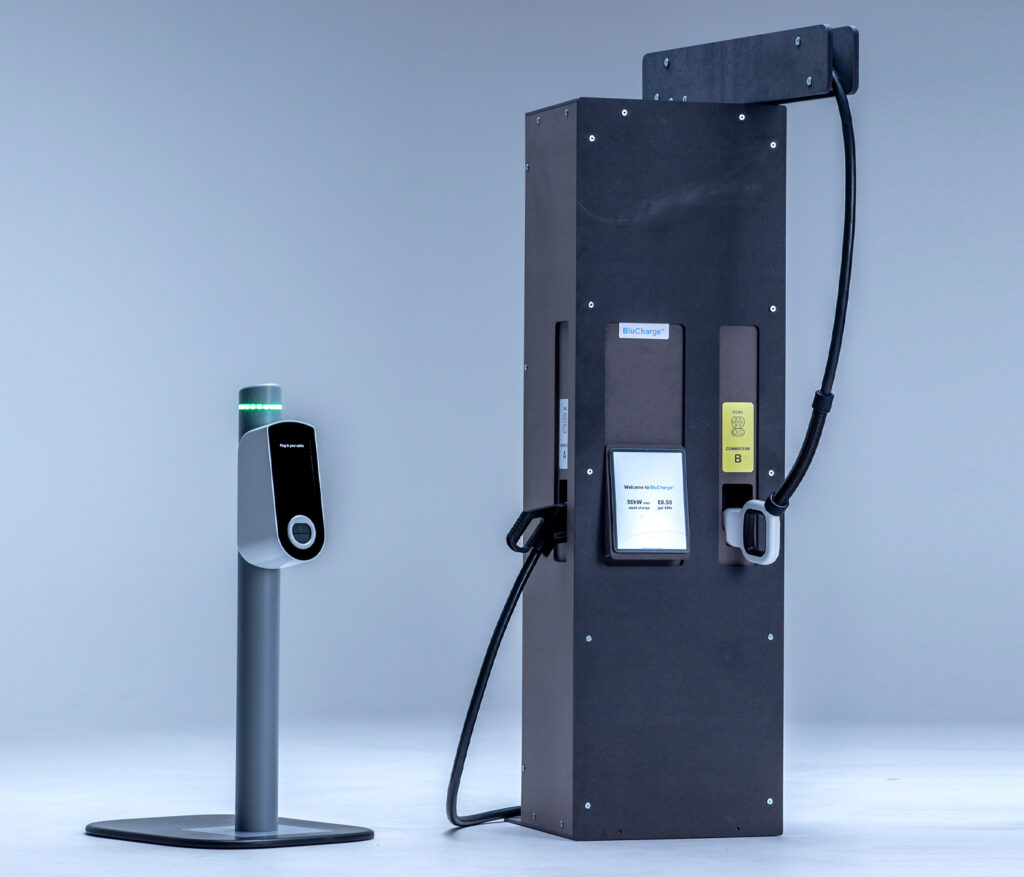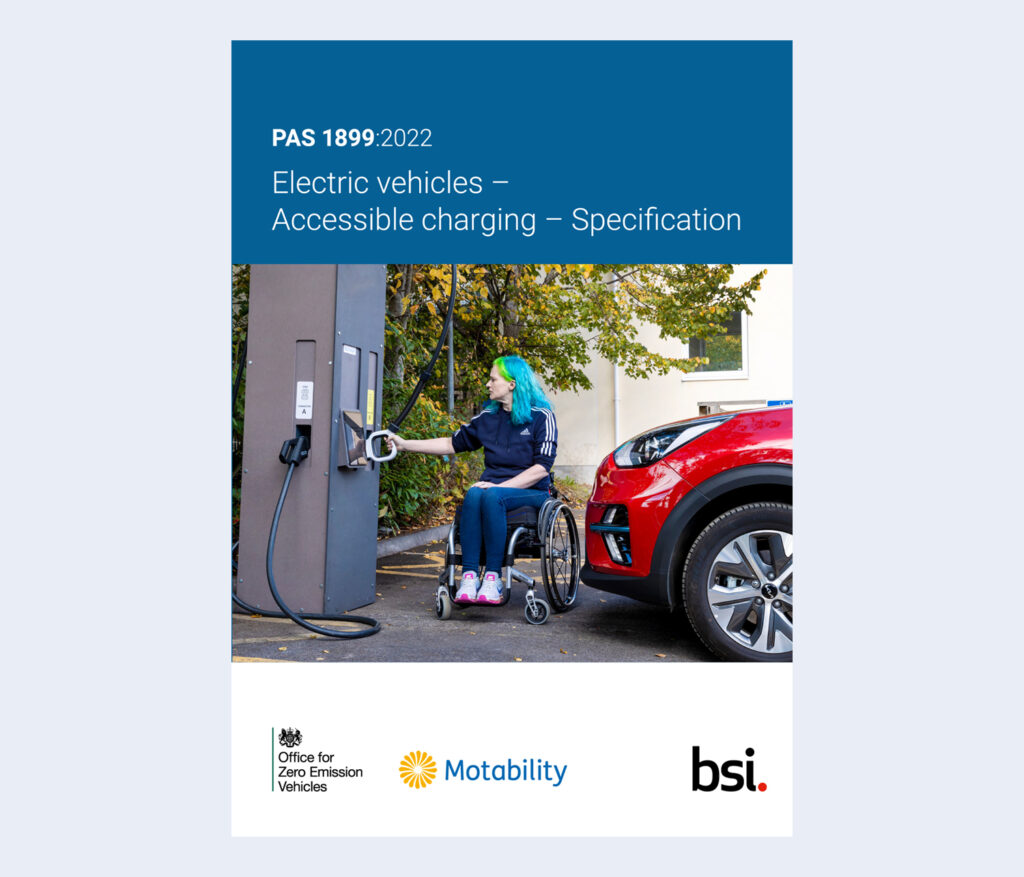Cables
Handling charging cables can be one of the most inaccessible aspects of charging for disabled people.

Cables attached to charging units
These “tethered” cables for high power rapid charging are typically thick, heavy and stiff, and can be hard to handle.
“I’m not very strong and it’s hard to drag the long cable and plug it in”

The effect of the cable weight on the user should be limited, so that people with reduced strength can use it. This can be done by supporting the cable in different ways, making it retractable, or reducing the length of the cable.
See PAS 1899:2022 (opens in a new window) for more information about cable weight.



Managing the space around the charging unit may enable the use of shorter cables, since more flexible spaces can increase the chance of a disabled person being able to park with their vehicle’s socket close to the charging unit.
Be aware that both short and long cables can be hard to manage.
People can have difficulty with stiff cables when they are using a cable in a small space (for example between charging unit and a vehicle).
“In some cases I have had to move the car, to be able to bend the cable tightly enough to plug it into the car.”
Stiffness can also cause problems when turning the connector towards the vehicle’s socket when the cable is at full stretch at the far end of the vehicle.
“When I connect to the vehicle I have to twist the cable round for the nozzle to fit into the charging socket and I find this very difficult due to the weight of the cable”
Avoid the tendency for cables to twist as this can make them hard to handle.
“It’s hard if the cable is twisted, as that means you’re fighting the rotation of the cable as you handle the cable and as you try to plug it in.”
Cables should be flexible enough to enable the user to move and position the connector where they need it, including plugging it into sockets that are at different heights and locations on vehicles. See our page about sockets for more details.

Consider changing the outer material of the cable to make it more flexible, or designing the fixed end of the cable so that the cable can move or swivel more freely. Building in greater flexibility where the cable meets the connector could also be helpful.
Avoid the need for cables to trail on the ground, as this can cause trips and falls or block access to people who cannot step over or wheel over them.
“When I am using walking sticks, it’s possible to fall over the cable”
Portable cables
These ”untethered” cables (owned by the user) can be hard to manage. While this project did not focus on users’ own cables, people shared some useful insights about the challenges that these can bring.

Reducing the weight of the cable could be useful for anyone with limited strength or stamina, as cables are often stored in a car boot and carried to the charging unit.
Cables can trail on the ground and get wet and dirty in some conditions, so it is desirable to help people to hold and carry the cables without getting their hands or clothing dirty. This can be a challenge for people who use both hands to propel a wheelchair or need to hold a walking stick.
Possible solutions could include adding handles to help manage the cable, reducing the cable length needed by rearranging the space at the charging unit, or providing ways of supporting the cable.

Untethered cables need to have usable connectors on each end. See our page about connectors for more information about this.

Our charging unit prototypes
Take a look at the prototype EV charging units that we built in response to our user engagement work

The new standard for accessible EV charging
Take a look at the requirements and recommendations set out in PAS 1899:2022 Electric vehicles – Accessible charging – Specification
Explore our case studies
Our case studies have been drawn together from first-hand accounts that were shared with us by disabled people and those close to them. Each story is made up of insights from several individuals, to share as much of our research as possible and to illustrate the impact of good and bad design on real people.
Download the design guidance
Our design guidance covers signage and information, the built environment and charging an electric vehicle.



